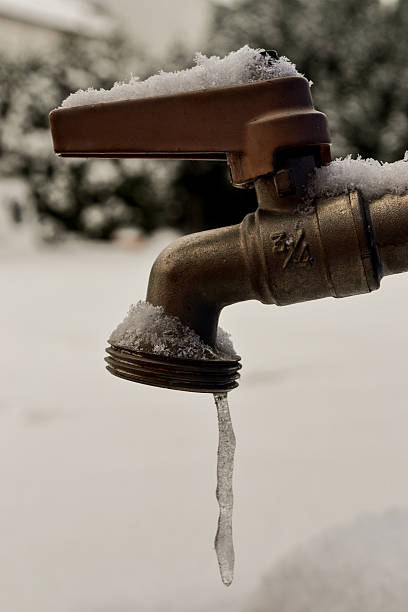How to Prevent Frozen Pipes in Winter: Professional Guidance
How to Prevent Frozen Pipes in Winter: Professional Guidance
Blog Article
This great article which follows relating to How to prepare your home plumbing for winter weather is seriously captivating. Have a go and draw your own findings.

Winter can wreak havoc on your plumbing, especially by freezing pipes. Below's just how to avoid it from taking place and what to do if it does.
Introduction
As temperature levels decrease, the threat of icy pipes increases, potentially causing costly repairs and water damage. Comprehending just how to prevent icy pipelines is important for property owners in cold climates.
Avoidance Tips
Protecting vulnerable pipelines
Cover pipes in insulation sleeves or utilize heat tape to protect them from freezing temperatures. Focus on pipelines in unheated or exterior locations of the home.
Home heating techniques
Maintain indoor areas appropriately warmed, especially areas with pipes. Open closet doors to allow cozy air to flow around pipes under sinks.
Exactly how to recognize icy pipelines
Search for lowered water flow from faucets, unusual smells or noises from pipelines, and noticeable frost on revealed pipelines.
Long-Term Solutions
Architectural modifications
Take into consideration rerouting pipelines far from exterior walls or unheated areas. Include extra insulation to attics, basements, and crawl spaces.
Upgrading insulation
Purchase high-quality insulation for pipes, attics, and walls. Appropriate insulation aids maintain consistent temperatures and minimizes the threat of icy pipes.
Securing Exterior Plumbing
Garden pipes and outside faucets
Detach and drain garden hose pipes prior to winter. Set up frost-proof spigots or cover exterior faucets with shielded caps.
Comprehending Icy Pipelines
What causes pipes to ice up?
Pipes freeze when subjected to temperature levels below 32 ° F (0 ° C) for expanded periods. As water inside the pipes ices up, it expands, taxing the pipe walls and potentially triggering them to break.
Dangers and problems
Icy pipelines can result in water supply interruptions, residential property damage, and pricey fixings. Burst pipelines can flooding homes and create considerable structural damage.
Indications of Frozen Pipeline
Determining frozen pipes early can stop them from bursting.
What to Do If Your Pipes Freeze
Immediate activities to take
If you believe icy pipes, maintain taps available to alleviate stress as the ice thaws. Utilize a hairdryer or towels taken in hot water to thaw pipelines gradually.
Conclusion
Avoiding icy pipes requires aggressive steps and quick actions. By understanding the reasons, indications, and preventive measures, property owners can safeguard their plumbing throughout cold weather.
6 Proven Ways to Prevent Frozen Pipes and Protect Your Home
Disconnect and Drain Garden Hoses
Before winter arrives, start by disconnecting your garden hoses and draining any remaining water. Close the shut-off valves that supply outdoor hose bibs and leave the outdoor faucet open to allow any residual water to drain. For extra protection, consider using faucet covers throughout the colder months. It’s also important to drain water from any sprinkler supply lines following the manufacturer’s directions.
Insulate Exposed Pipes
Insulating your pipes is an effective way to prevent freezing. Pipe insulation is readily available at home improvement stores and is relatively inexpensive. Pay close attention to pipes in unheated areas such as the attic, basement, crawl spaces, or garage. Apply foam insulation generously to create a buffer against the cold. You can also wrap your pipes in heat tape or thermostat-controlled heat cables for added warmth.
Seal Air Leaks
Inspect your home for any cracks or openings that could let in cold air. Seal any holes around the piping in interior or exterior walls, as well as the sill plates where your home rests on its foundation. Additionally, make sure to keep your garage door closed unless you’re entering or exiting. Leaving it open creates a significant air leak that can lead to frozen pipes.
Allow Warm Air Circulation
During cold snaps, it’s essential to allow warm air to circulate evenly throughout your home. Leave interior doors ajar to promote better airflow. Open kitchen and bathroom cabinets to help distribute heat consistently around the rooms. If you have small children or pets, be sure to remove any household chemicals or potentially harmful cleaners from open cabinets for safety.
Let Faucets Drip
A small trickle of water can make a big difference in preventing ice formation inside your pipes. When temperatures drop significantly, start a drip of water from all faucets served by exposed pipes. This continuous flow helps prevent the water from freezing. Additionally, running a few faucets slightly can relieve pressure inside the pipes, reducing the chances of a rupture if the water inside does freeze.
https://choateshvac.com/6-proven-ways-to-prevent-frozen-pipes-and-protect-your-home/

As a passionate person who reads on Winter Plumbing Precautions: Preventing Frozen Pipes, I imagined sharing that segment was a smart idea. Sharing is caring. Who knows, you will be doing someone a favor. I cherish reading our article about Winter Plumbing Precautions: Preventing Frozen Pipes.
Click Here Report this page